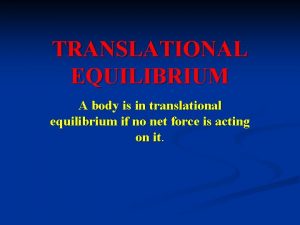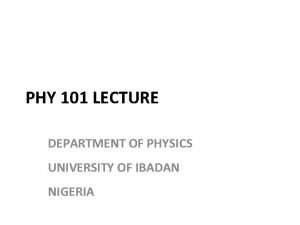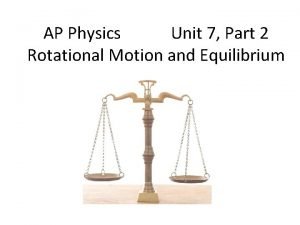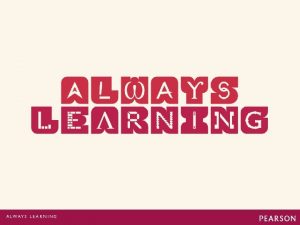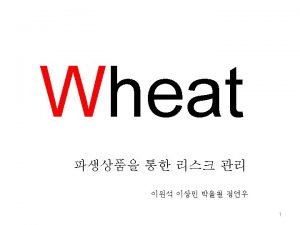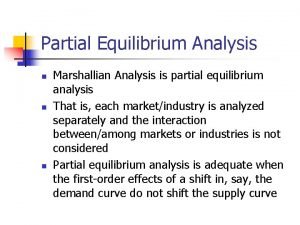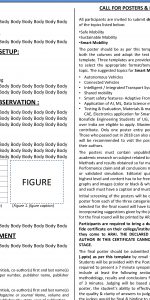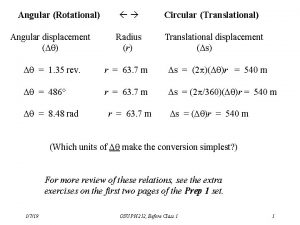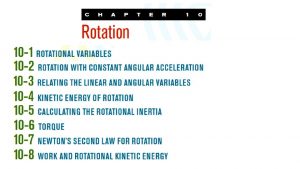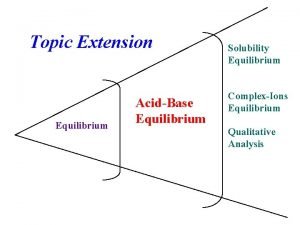TRANSLATIONAL EQUILIBRIUM A body is in translational equilibrium

TRANSLATIONAL EQUILIBRIUM A body is in translational equilibrium if no net force is acting on it.

CONCURRENT FORCES Forces acting at a common point in a body or those forces whose lines of action meet a common point NON- CONCURRENT FORCES Forces act on different points of a body or those forces whose lines of action do not intersect

TORQUE (Ƴ) = F x l -Is equal to the product of the force (F) perpendicularly acting on the body and the length (l) of its moment arm (distance from pivot point) - measure of the turning effect of the force on the body. - Also known as the moment of the force.

Consider a person trying to open a door, by applying a force, of magnitude, F, as shown below. The perpendicular distance, d, between the line of action of the force and the pivot (the hinge of the door) is F r sinα Therefore, the moment of the force is given by Torque = F r sinα

ROTATIONAL EQUILIBRIUM A body is in rotational equilibrium if no net torque is acting on it. A torque that causes a counterclockwise rotation is considered as positive while one that causes clockwise rotation is considered as negative

A child of mass m is supported on a light plank by his parents, who exert the forces and as indicated. Find the forces required to keep the plank in static equilibrium. Use the right end of the plank as the axis of rotation.

1. Set the net force acting on the plank equal to zero: 2. Set the net torque acting on the plank equal to zero: 3. Note that the torque condition involves only one of the two unknowns, . Use this condition to solve for : 4. Substitute : into the force condition to solve for

A 5. 00 m long diving board of negligible mass is supported by two pillars. One pillar is at the left end of the diving board, as shown below; the other is 1. 50 m away. Find the forces exerted by the pillars when a 90. 0 kg diver stands at the far end of the board.
- Slides: 8
